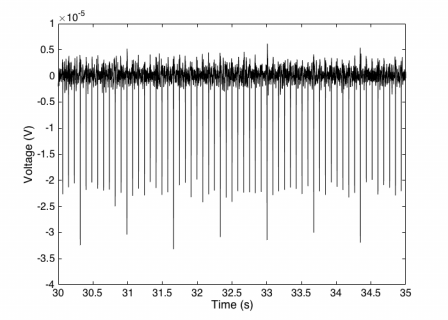I have a data logger which uses Teensy 3.2 to fetch data from the ADS1298 ADC and store it on an SD card.
I'm also using the 3.3V output of the LDO on the Teensy board to provide power to a miniature 9723GX Sonion microphone. The output of the microphone is sampled by the ADC at 1 KS/s. The signal I'm interested in is in the range of microvolts, but what I observe is a huge number of spikes in the recorded signal corresponding to the time instances of data being written to the SD card, see plot below.
The SD card I'm using is the Swissbit 1GB which draws 50mA during the write operation, which is well within the capabilities of the LDO. For this test Teensy was supplied by an external bench-top power supply at 4.2 V.
Any idea what could be done to get rid of this supply pulling/ground noise or mitigate it in some way?

I'm also using the 3.3V output of the LDO on the Teensy board to provide power to a miniature 9723GX Sonion microphone. The output of the microphone is sampled by the ADC at 1 KS/s. The signal I'm interested in is in the range of microvolts, but what I observe is a huge number of spikes in the recorded signal corresponding to the time instances of data being written to the SD card, see plot below.
The SD card I'm using is the Swissbit 1GB which draws 50mA during the write operation, which is well within the capabilities of the LDO. For this test Teensy was supplied by an external bench-top power supply at 4.2 V.
Any idea what could be done to get rid of this supply pulling/ground noise or mitigate it in some way?

Last edited:

